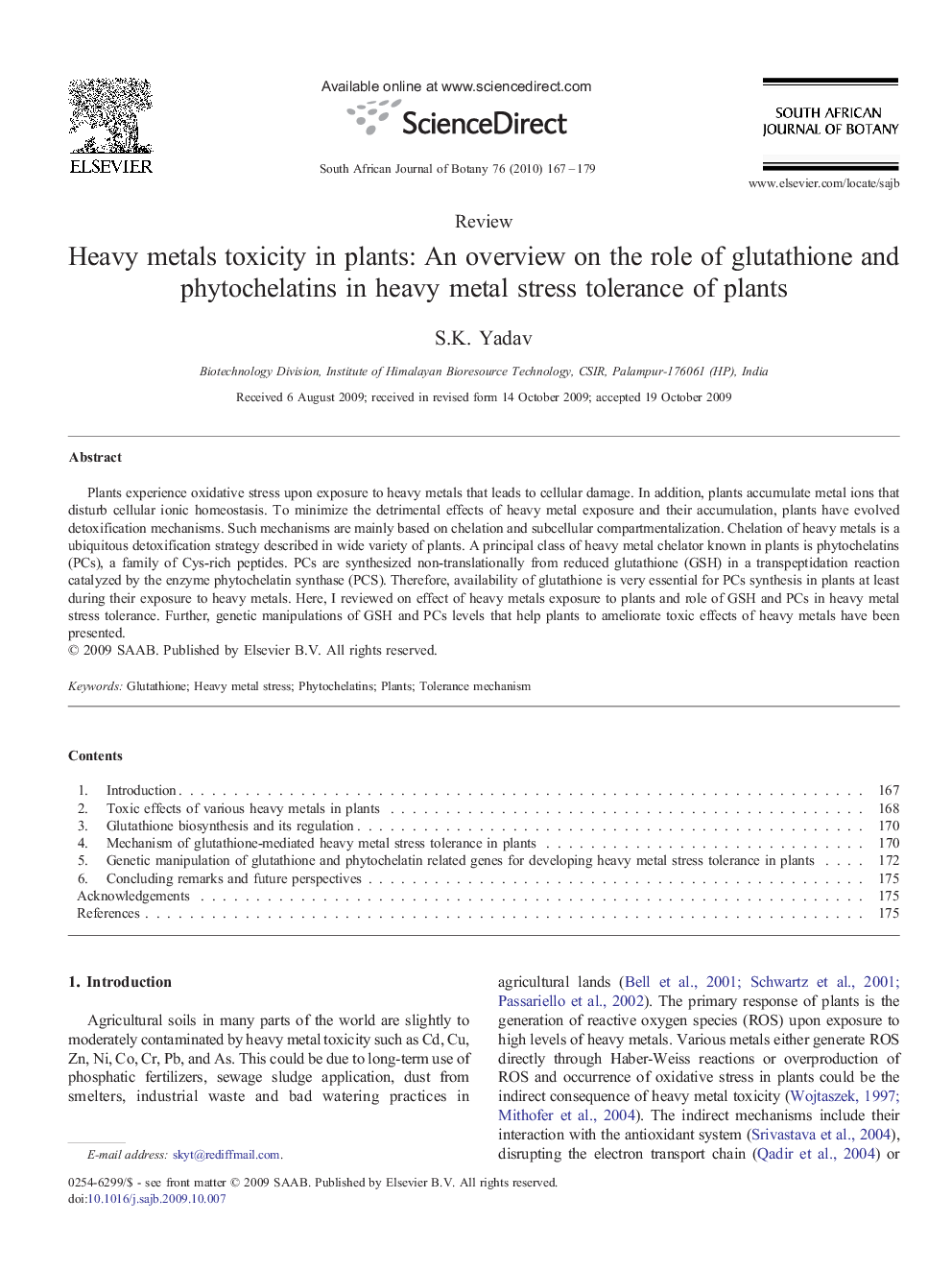| کد مقاله | کد نشریه | سال انتشار | مقاله انگلیسی | نسخه تمام متن |
|---|---|---|---|---|
| 4521275 | 1625187 | 2010 | 13 صفحه PDF | دانلود رایگان |

Plants experience oxidative stress upon exposure to heavy metals that leads to cellular damage. In addition, plants accumulate metal ions that disturb cellular ionic homeostasis. To minimize the detrimental effects of heavy metal exposure and their accumulation, plants have evolved detoxification mechanisms. Such mechanisms are mainly based on chelation and subcellular compartmentalization. Chelation of heavy metals is a ubiquitous detoxification strategy described in wide variety of plants. A principal class of heavy metal chelator known in plants is phytochelatins (PCs), a family of Cys-rich peptides. PCs are synthesized non-translationally from reduced glutathione (GSH) in a transpeptidation reaction catalyzed by the enzyme phytochelatin synthase (PCS). Therefore, availability of glutathione is very essential for PCs synthesis in plants at least during their exposure to heavy metals. Here, I reviewed on effect of heavy metals exposure to plants and role of GSH and PCs in heavy metal stress tolerance. Further, genetic manipulations of GSH and PCs levels that help plants to ameliorate toxic effects of heavy metals have been presented.
Journal: South African Journal of Botany - Volume 76, Issue 2, April 2010, Pages 167–179